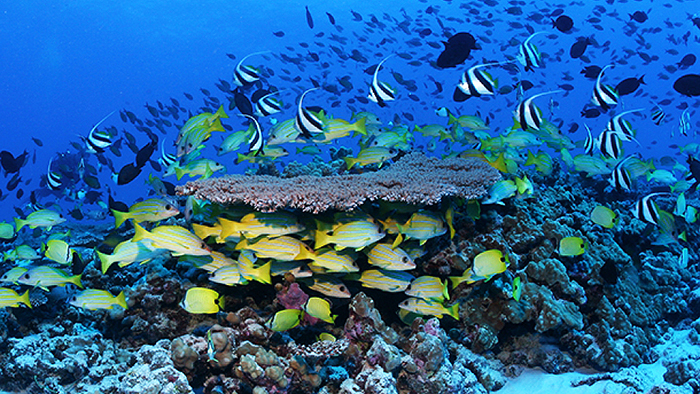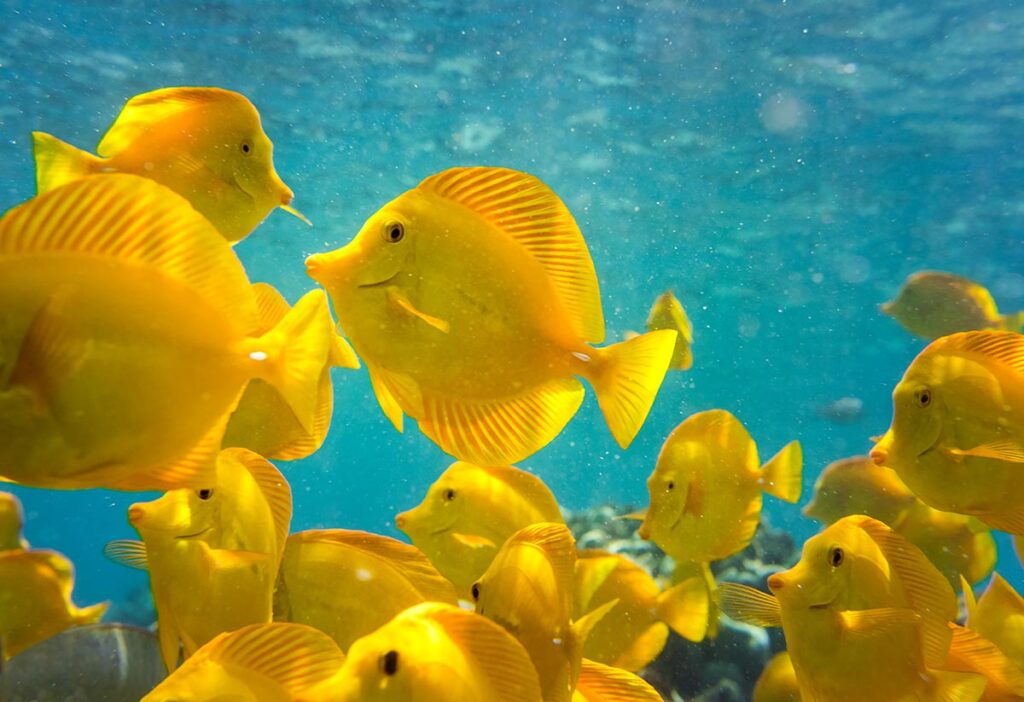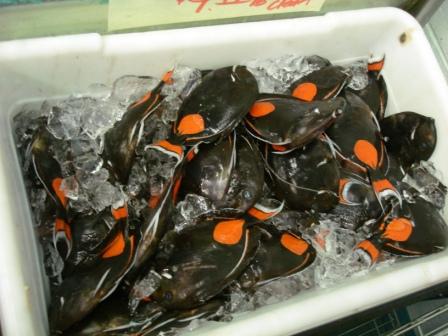After years of relentless attempts to legislate Hawaii’s legal marine aquarium fishery out of existence, anti-aquarium trade activists, with the support of big environmental non-profits, have succeeded in officially closing what some consider to be the most well-studied, well-managed, sustainable marine aquarium fishery on the planet.
As of January 12th, 2021, the fishers who collected marine aquarium fishes under the licensing and monitoring of Hawaii’s Department of Land and Natural Resources (DLNR) are out of jobs, at least for the foreseeable future. The last remaining allowances for minimal aquarium fishing to continue have been closed by the state’s courts. First, the official news release from the DLRN.

via Hawaii Department of Land and Natural Resources (DLNR)
Commercial Fishers Notified That All Aquarium Collections Are Invalid
(HONOLULU – 1/12/2021) – Circuit Court Judge Jeffrey Crabtree ruled today that all commercial aquarium fishing is completely banned in the State of Hawaiʻi, unless and until the aquarium fishing industry has completed the Chapter 343 environmental review process. The ruling was made in response to a request by aquarium fishing opponents.
Anyone who takes marine life for commercial purposes must have a commercial marine license (CML) issued by the Department of Land and Natural Resources’ Division of Aquatic Resources (DAR). This requirement applies to all kinds of take of aquatic resources, including commercial aquarium collection. More than 3,000 CMLs are outstanding. 41 CML holders reported aquarium catch in 2020. The Court’s ruling explains that none of the current CMLs may be used for commercial aquarium collection. The ruling does not affect other types of commercial fishing or taking of marine life.
DLNR Chair Suzanne Case said, “Commercial aquarium collection has been controversial for many years in Hawaiʻi. Various court orders over the years have narrowed the allowed scope of the industry. The DLNR has faithfully implemented those orders and will now faithfully implement this ruling completely banning the industry without an approved EIS.”
DAR is in the process of notifying CML holders about the Court’s ruling.
###

Behind the Scenes
In a private conversation following this news, a US-based distributor of marine aquarium livestock, wishing to remain anonymous, told CORAL that this will have obvious and immediate impacts on all marine aquarium fishes that originate from Hawaii.
With the prior court ruling, the distributor saw the price of a Yellow Tang (Zebrasoma flavescens) double. Now, with this latest ruling, the price of Yellow Tangs already collected and being held in inventory has doubled again. These price increases obviously reflect supply and demand but have also been put in place by Hawaiian exporters to provide a bit of a financial boost to collectors/divers, who are now out of jobs.
The distributor noted that as a result, larger-than-normal orders are being placed to bring in as many Hawaiian fish from the available stock as possible. This distributor noted that they will be attempting to allocate fishes like the Yellow Tang fairly between retailers, but suspected that other wholesalers may adopt different tactics. Some wholesalers may restrict the sale of Yellow Tangs, even sitting on them while prices continue to increase.
It was suggested that aquarium retailers should increase the prices on Yellow Tangs already in stock, because the replacement cost to restock that fish will be substantially higher, and ultimately, wild-caught Hawaiian Yellow Tangs will no longer be available.
Meanwhile, the Hawaiian-based branch of The Biota Group continues to produce captive-bred Yellow Tangs for the aquarium trade. As inventory of wild-caught Hawaiian Yellow Tangs runs out, Biota may become the only source of Yellow Tangs in the world.

What Will Become Of Beloved Hawaiian Fishes?
Aquarists can’t necessarily turn to captive-bred options for other Hawaiian favorites at this time. Unless the fishery is restored, or captive-breeding projects are able fill the gap, Hawaiian endemics will be gone from the aquarium trade indefinitely.
Noteworthy endemics like Potter’s Angelfish (Centropyge potteri) and Flame Wrasses (Cirrhilabrus jordani) are found nowhere else. In other cases, high-profile fishes such as the Achilles Tang (Acanthurus achilles) may occur in other locations, but for myriad reasons only enter the aquarium trade through the Hawaiian Islands, and thus will likely disappear from the trade in the near future as inventories run out.
It remains unclear whether Hawaii’s fishery will ever be allowed to reopen. If it ever does, it’s unclear how many fishers, now squarely out of work, could return to this niche trade (and how many would even want to).
It is challenging to acknowledge, looking through a historical lens, the ongoing erosion of Hawaii’s aquarium fishery over time, despite the proper management of the fishery by the agencies tasked with that responsibility. Fishermen have been put under ever-increasing pressure to relinquish rights and make concessions to allow their profession to continue, but compromise was clearly never enough for those opposed to the practice.
Some marine biologists based in the Hawaiian Islands say it’s deeply troubling to observe the hypocrisy of those who oppose the fishery, as revealed where non-aquarium fishing overlaps among certain species. For example, it is still perfectly legal today to spear and kill a $300 Achilles Tang to eat, while it will now be considered poaching to harvest one to keep, alive, in an aquarium. It’s equally troubling that only the marine aquarium fishery has been singled out as requiring high-level environmental review, while many other commercial fisheries operating under the same license are not.
What has happened to Hawaii’s marine aquarium fishery is profound, according to fishers and marine scientists alike. Emotion and bias have—at least for now—trumped science, driven by organizations with deep pockets that could outspend the entire industry without a second thought.
The closure of Hawai’i’s aquarium fishery may serve as a real-world warning for those elsewhere who continue to participate in the collection and distribution of wild fishes and corals for the aquarium trade. Hawaii’s fishers are certainly not alone; Indonesia’s coral ban is another reminder, and the battle over coral collection and coral farming in Fiji rages on.





This is the end of hawaiian live fish. Snorkel Bob Rene Umberger,The Fish coalition,are coming to your state next. They will buy the needed Judges,and PAC s.
Watch out Hawaii, all comercial fishing will be next. They did it to California.
Wake up and fite it or loose it all
SAD
AUWE
Another disabled Vet unable to support his family
What will i do at 66
I often find articles in Coral to be little more than thinly veiled product endorsements with little real content. With that in mind this editorial, in the guise of a news article, serves the interests of your advertisers. It does not, however, make a convincing case for continued harvesting of Hawaiian fish. I am told that emotion and bias have trumped science, but the science is not presented. The opinion of “some marine biologists”, offered anonymously, is not terribly persuasive, because those biologists might be outliers. I would be more interested in knowing the opinion of the majority of marine biologists, and this information is not offered. I’m not saying you’re wrong, but I’m not convinced that you’re right.
Hi Craig,
I can tell u may be the knd that only reads sumaries of stories. Go back a few issues of r2r and u will fnd all theproof and from many marine biologists not just our leading one in Hawaii. Its uninformed persons like u that probably voted for our last president.
U saw how that played out.
Everything u like and. CRave is now under attack by those that think that u dont deserve it
Fight for it ,dont give up.
Snorkel Bob and associates dont want u to have any pets. Ur dog will be next.
Aloha
There is a lot of evidence online that shows the aquarium hobby isn’t the problem to the Hawaiian reef fish. It’s the big commercial fishing, pollution and climate change. But the easy target is the aquarium industry. We will see in the coming years that ban did nothing to help fish population that has been increasing in numbers over the years. This bill stinks just like the swap that approved it in Washington that had to sneak it into a covid 19 relief package along with another bill to protect Hollywood. It’s all about who gives the corrupt politicians the most money.
Craig, I can respect that critique of my writing here, but the reason it’s not presented here is that it has been presented prior, for years, in the pages of CORAL and online here. A search for “Hawaii” here will present a treasure trove of back story and information. Here’s a couple of quick links that are more recent:
https://www.reef2rainforest.com/2020/01/06/hawaiis-marine-aquarium-fishery-the-numbers-dont-lie/
https://www.reef2rainforest.com/2018/04/13/hawaiis-contentious-inshore-fisheries-by-the-numbers/
https://www.reef2rainforest.com/2018/09/20/hawaiis-aquarium-fishery-what-happened-macna-2018/
https://www.reef2rainforest.com/2016/11/21/video-hawaiis-aquarium-fishery-regulated-valuable-sustainable/
This is very unfortunate. Reefers have a tremendous love for the fish they purchase and gain an innate sense of value and respect for them. We work to keep them in an environment that sustains their life so others can also appreciate how truly magnificent they are. To allow the commercial fishing for dinner whilst shutting down the aquarists is appalling. Shame on them.
I’ve said it here before and I’ll say it again, be careful who you ideologically get into bed with, BIG ENVIRONMENT is not your friend … ever … you are merely an ignorant pawn in its game of influence and self-interest.
Such a sad day. Well written article. Its a shame that industry hasn’t been heard and more than enough scientific evidence put forward wasn’t listened to. Decisions based on emotion. I only hope the new EIS will be seen as a positive step forward and industry can find a way forward with the DLNR to manage their resources and ensure the benefit of endemic species stays in Hawaii and benefit local population and not moved to another country breeding these species.
The initial EIS had over 2000 pages of well designed and explained science. Hopefully the followup with adress all of the original questions and concerns and ensure a sustainable way forward
What a shame to see all those Achilles Tangs on ice.
I think that this is the right time to invest in more and better ways to breed marine fish. Would be great to someday have captive bred marine fish available for all of the popular species of fish currently being collected. I for one would love to see the day when no marine fish are caught in the wild and only captive bred fish are available and necessary for the aquarium hobby. Our oceans are already suffering in a huge way and many coral reefs are already at the brink of devastation. We need to find ways to repair our oceans and increase the types and availability of captive bred marine fish.
Matt, thank you for supplying the links. I will most definitely read them carefully. Dan, I’m sorry if my comments got under your skin. Trust that I will follow this story attentively. (Also, I suspect that we both voted for same candidate and, even if we didn’t, I love you just the same.)